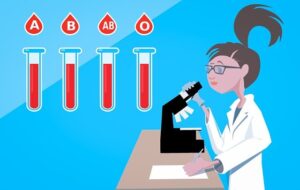2020-2025 American Dietary Guidelines: 4 healthy eating guidelines
- Gut Bacteria Enzymes Offer Hope for ABO Universal Blood Transfusions
- Well-Known Japanese Medicine Exposed for 30 Years of Data Falsification
- Oregon Reverses Course: From Decriminalization to Recriminalization of Drug Possession
- Why Lecanemab’s Adoption Faces an Uphill Battle in US?
- Yogurt and High LDL Cholesterol: Can You Still Enjoy It?
- WHO Releases Global Influenza Vaccine Market Study in 2024
2020-2025 American Dietary Guidelines: 4 healthy eating guidelines
2020-2025 American Dietary Guidelines: 4 healthy eating guidelines. “American Dietary Guidelines” recommends 4 healthy eating guidelines, it’s not difficult to eat well and healthy and Extra surprise: 15% unhealthy quota per day.

The Dietary Guidelines for American Residents is published every 5 years. On December 29, 2020, the United States Department of Agriculture (USDA) and the Department of Health and Human Services (HHS) issued the “Dietary Guidelines for U.S. Residents (2020-2025)”, providing information on “what to eat and drink to meet nutritional needs and promote Health and reduce the risk of chronic diseases” recommendations.
Daily diet will have a profound impact on our health. Following a healthy diet can not only meet nutrient requirements and keep the body healthy, but also reduce overweight/obesity, heart disease, stroke, type 2 diabetes, high blood pressure, liver disease, cancer , Dental caries, metabolic syndrome and other nutrition-related chronic diseases.
The newly released “Dietary Guidelines for U.S. Residents (2020-2025)” proposes four healthy dietary guidelines for all kinds of people, including healthy people of all ages and people at risk of disease, including encouraging residents to choose food and beverages reasonably and stay healthy throughout their lives diet.
Four core guidelines recommended in the Dietary Guidelines for American Residents (2020-2025):
Recommendation 1. A healthy diet should be followed at every stage of life.
At each stage of the life cycle (infancy, childhood, adolescence, adulthood, pregnancy, lactation and old age), everyone should strive to adopt a healthy diet to improve their health. Early life will also affect food choices and health in adulthood, and following a healthy diet will benefit life.
0-6 months old
Breastfeeding is recommended. It is recommended to continue breastfeeding until 1 year old, and if necessary, breastfeeding time can be extended appropriately. If the baby cannot breastfeed within the first year after birth, the baby can be fed with iron-fortified infant formula. Vitamin D should be supplemented immediately after the baby is born.
6-12 months old
Increase the intake of nutritious complementary foods. When babies can eat complementary foods, there is no need to avoid foods that are easy to cause baby allergies. At the same time, pay attention to providing them with foods rich in iron and zinc, especially breast-fed babies.
12 months old-adulthood
Follow a healthy diet pattern throughout the life cycle to meet nutritional requirements, achieve a healthy weight, and reduce the risk of chronic diseases.
Recommendation 2. Optimizing and enjoying foods and beverages with high nutrient density, taking into account personal dietary preferences, cultural traditions and costs.
Regardless of age, race or current health status, a healthy diet can benefit all individuals. At the same time, a healthy diet should be enjoyable and pleasant, not burdensome and stressful. The American culture is diverse and complex. There is no single recipe that can meet the needs of all residents. The “Guide” provides residents with a framework for dietary patterns and provides recommendations for food groups and subgroups (rather than specific foods and beverages). It aims to customize healthy diet patterns according to personal needs, preferences, budgets and cultural traditions. This approach ensures that people can choose healthy foods, beverages, meals and snacks according to their needs and preferences, so that they “make the decision by themselves” and enjoy healthy meals.
A healthy diet does not have to eat any specific food, but eat all kinds of food. The food in a big category can be selected according to personal preference and financial ability. In the diet, as long as you can achieve the following 3 points, you can achieve a balanced nutrition:
Eat more foods with high nutritional value and less oil, salt and sugar
Mainly obtain nutrition from food, especially eat more food with high nutritional value and less oil, salt and sugar.
(Specifically: vegetables, fruits, grains, milk and protein-rich foods.)
As many types of food as possible
The five types of foods mentioned above must be eaten every day, and try to eat as many different types as possible in each category.
(The Chinese Dietary Guidelines recommend 12 different foods every day.)
Pay attention to the amount of food
The total amount of food should be appropriate, especially unhealthy food, try to choose small portions.
(It is necessary to develop a good habit of looking at the ingredient list. When buying snacks, look at the nutrition ingredient list and quantity on the package.)
Recommendation 3. Special attention should be paid to foods and beverages with high nutrient density to meet the needs of the food group and suitable energy limits.
The first thing to ensure is to meet the nutritional needs through food intake, especially foods and beverages with high nutrient density. Foods with high nutrient density provide vitamins, minerals and other health-promoting ingredients, with little or no added sugars, saturated fatty acids and sodium. A healthy diet includes high-nutrient-density foods and beverages in each food group to reach the nutrient reference intake while ensuring that the total energy intake is appropriate.
The core elements of a healthy diet include:
Vegetables
Various types of vegetables (including dark green, red and orange vegetables), legumes including soybeans and mixed beans, starchy vegetables and other vegetables.
(If you can’t eat fresh vegetables, frozen vegetables and canned vegetables are also good choices.)
Fruit
Especially the whole fruit.
(No added dried fruit, 100% fruit juice can also be used to meet the daily demand for fruit, but compared to eating fruit, pay attention to reducing the amount.)
Cereals
At least half are whole grains.
(The grains with only the outer hard shell removed during processing are called whole grains. For example, rice with only the outer shell removed is called brown rice, and wheat with only the shell removed is called whole wheat, which are all whole grains.)
Dairy products
Non-fat or low-fat milk, yogurt, cheese, and/or lactose-free versions, fortified soy beverages are used as alternatives.
Foods rich in protein
Lean meat, poultry and eggs, seafood, beans (soybeans and mixed beans), nuts, seeds and soy products.
Oil
Vegetable oils and oils in foods, such as seafood and nuts.
Recommendation 4. Reduce added sugar, saturated fatty acids and high sodium foods and beverages, and limit alcoholic beverages.
Sugar
The proportion of energy is less than 10% of the total energy. Children under 2 years of age should avoid added sugar.
(Adults should add less than 50g of sugar per day, preferably no more than 25g. Sugars in beverages and sweets, including syrup and honey, should be restricted.)
Saturated fatty acid
For people 2 years and older, saturated fat energy supply should be less than 10% of total daily energy.
(Adults’ daily intake of saturated fat is best controlled below 20g. Some saturated fats naturally exist in lean meat, eggs, milk, and nuts, which may account for about 10g, and the rest is reserved for fat, butter, butter, and pastries. The quota is really not too much, I can still avoid eating as much as possible.)
Sodium
Adopt chronic disease risk reduction intake, the intake of 1-3 years old children does not exceed 1200 mg/day; the intake of 4-8 years old children does not exceed 1500 mg/day; the intake of 9-13 years old children does not exceed 1800 mg /Day; the intake of other age groups should not exceed 2300 mg/day.
(2300mg of sodium is replaced by salt, which is about 6g. The World Health Organization and the Healthy China Action Plan have reduced this amount to no more than 5g of salt per day.)
Alcoholic beverage
It is recommended that adults 21 years of age and older limit alcohol consumption. Men’s daily intake should be limited to 2 cups or less, and women’s daily intake should be 1 cup or less (1 cup of alcoholic beverage equivalent is defined as containing 14 grams of alcohol); binge drinking should be avoided (Drinking 5 or more glasses of alcohol for men and 4 or more drinks for women within 2 hours is considered binge drinking); for those who do not drink, it is not recommended to start drinking; people who are pregnant or may be pregnant and those who are under the legal drinking age should not drink alcohol .
(It is best not to drink. If you can’t give it up, the pure alcohol intake for men should not exceed 28g and women should not exceed 14g. In the dietary guidelines for Chinese residents, the limits are 25g and 15g, which are basically the same. 25g of alcohol is equivalent to : Beer 750ml, wine 250ml, 38% liquor 75ml, high liquor 50ml.)
Extra surprise: 15% unhealthy quota per day
We all know that grilling, frying, and creamy desserts are not good, but we just want to eat them. The new “Guide” proposes that as long as 85% of the energy comes from healthy food every day, the remaining 15% of the energy quota can be eaten what you want.
Is this a surprise? Based on the 15% energy quota, an adult, as long as the overall nutrition is balanced, vegetables, fruits, whole grains, milk, and high-quality protein can eat enough. You can eat about 250-300kcal of unhealthy food every day. Occasionally eat two skewers, drink a cup of milk tea, and have an ice cream. Don’t feel so guilty. Do you think you can stick to a healthy diet?
(source:chinanet, reference only)
Disclaimer of medicaltrend.org



